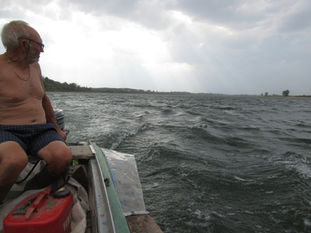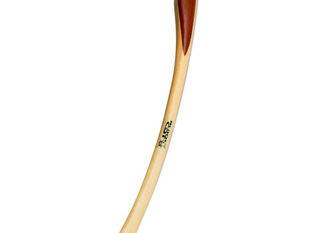
Family members and the senior adults rule
Nov 13, 2024
4 min read
Despite existing hunting pressure, the family successfully keeps its size. Year after year (since 2018 when the first camera-trap started recording), the family maintains about 10 members. Firstly, there are the senior adults of 6-7 years old by Summer ’24 (jackals are known to live for up 13 years, maybe, with chance, even over that).
Then there are the junior adults who are in the age bracket 1-3 years. Their number depends on the litter of the previous year, on one hand, and the loss or emigration of a junior adult, on the other. Whatever the circumstances, this most volatile contingent has kept so far to 3-4 animals in size.
The ’24 season was remarkable for the fact that of the four junior adults, all of them had stayed in the family. These were the two Round Ears (sister and brother, two-year-old), and Big Ears, again sister and brother, one-year old.
Judging by the active nipples of the Mother in May-June ‘24, she may have given birth to four pups again. One of them may have died in early infancy because when she led them out in mid-July, only three pups could be seen. In the end, in the after-denning period of ‘24, the family had ten members again. It is thus the case, that the composition of the family since 2018, had kept to three senior adults, three-four juniors, and three-four pups.
As said before, the senior adults were the breeding pair (the two dominants), with the strange, avuncular case of White Back added to this cohort. It is known that a major strength of jackal families is the fact that a junior adult may stay with the family as a ‘helper’ to the mother, instead of emigrating to create a family of their own.
The senior adults rule seems to consist in a prohibition of the non-breeding male, i.e., White Back, to be around the bait-site during the denning period. He may do that only in the post-denning period, i.e., since mid-July on. Indeed, he becomes the dominant senior presence then, acting as a chaperon in respect of the junior adults and the pups. The institution of chaperoning will be explained further on. Below, we provide some more examples about how the denning-period exclusion rule is enforced.
We have shown how the breeding pair chases White Back from the bait-site. But at times, it is the dominant female, the Mother, who takes on the same task. In the following example, she does it with the help of two junior adults.
A sequence in the night of 20-21 July, 2023 begins with the Mother eating at the bait-site (21:39). This has been her second visit during this night. The first began as early as 18:29:36, which is half-past five normal time – practically daytime. For early appearance this marked an all-time record:

This was barely a few days before the night when she led out her first pups (24-25 July). What happened in the Mother’s second visit of the 20th, speaks of very strict observance of the exclusionary rule: not until the very last day of denning, White Back had any business around the bait-site.
As said above, Mother’s second visit began at 21:39. A little while afterwards, a junior adult appeared (21:41). This was Pretender, who in the year of the incident (’23), was a young, three-year old male. For a time, he had aspired for a leading position in the family – hence the name - but Big Man was too much of a match for him. The Pretender must have emigrated later on in the Autumn as he was not seen around during the next season of 2024.

At 21:47 Mother swaps place with him at the bowl. She suddenly senses some presence behind my father’s tent. (Since the sides of the big tent were reefed up for ventilation, that was somewhere behind his head). Whoever had been there evidently proceeds up the bluff. At that moment, Mother sprints directly upslope. A few seconds later, the Pretender follows, leaping up the slope in spectacular bounds, much like the Hound of the Baskervilles. The last pursuer is Round Ears who was a year-old then.
Fig.3 Sprinting up the bluff
Here is the place to say that walking up the bluff – let alone sprinting - is no mean feat. What we have is a 15 metre vertically rising wall of sedimental loess, densely overgrown. It looks like this:

Round Ears (brother) staring at the camera upon coming down the bluff.

The birthing den was halfway up the bluff in 2023. It used a ventilation opening of a badger sett.

The above photo shows the ‘square’, the tent, and the overgrown vertical wall behind. The bait-site is 30 m to the left of the tent, with the birthing den 15 m further on.
But back to the chase in the night of 20-21 July, ‘23. After the vertical sprint, the three pursuers disappeared into the night. A minute later White Back’s indignant shouts are heard from the river bank. He had been chased away from the bait-site yet again. The denning period of ’23 was not yet over.
Fig. 7. White Back is shouting from the riverbank
When the denning period is finally over, the time of White Back (the Uncle) begins. This Uncle-dominated period we present in the next story.
-----------
For those who are interested in the topic of ‘helpers’, we recommend Patricia Moehlman‘s classical paper "Social organization in jackals: the complex social system of jackals allows the successful rearing of very dependent young." American Scientist 75, no. 4 (1987): 366-375.
We can speak only about the period May-September. Our in situ observations, due to limited resources, do not extend any further. What we know about jackal affairs from then on is only by active correspondence with our local friends.
All times are given in Daylight Saving Time (DST), Sofia.






